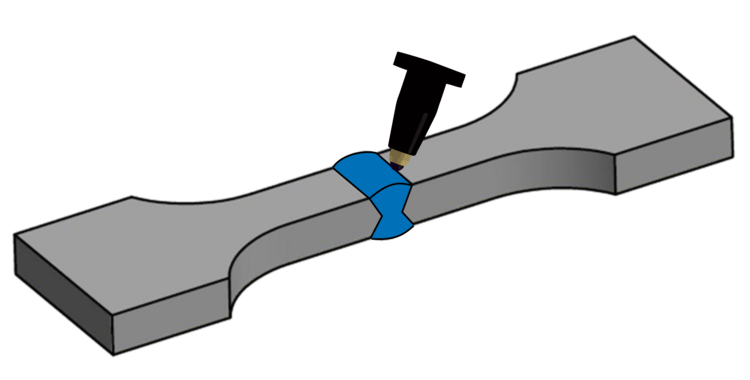Deep Rolled Welds: Increased Fatigue Strength of Welded Joints in Wind Energy by Deep Rolling
 © IFW, Hb
© IFW, Hb
| E-Mail: | heikebruegge@ifw.uni-hannover.de |
| Year: | 2019 |
| Date: | 14-02-20 |
| Funding: | AiF-IGF |
| Duration: | 06/2019 – 11/2021 |
| Is Finished: | yes |
With the amendment of the Renewable Energy Sources Act (EEG) for the expansion of renewable energies, which was passed in 2017, the German government has set the target of increasing the share of electricity generated by renewable energies in Germany to up to 45% by 2025. By 2035, this share is to increase to approx. 55-60% and by 2050 to at least 80%. Onshore and offshore wind turbines (OWEA) are defined as a supporting pillar in the EEG expansion path and make an indispensable contribution. A significant savings potential lies in the optimization of the design, manufacturing and installation processes of the WTG foundation structures, which account for approximately one third of the total costs of an offshore wind farm. The WTG support structures are continuously stressed dynamically by wind, wave and operational loads. In this context, the welded joints are to be seen as a decisive design detail. Their fatigue plays a crucial role in the lifetime of the structure.
In this cooperative project between the steel and mechanical engineering industries, the deep rolling process already established in mechanical engineering is being investigated on butt welded joints of thick plates. The aim of the project is to qualify the deep rolling process for application to butt welded joints. The investigations focus on the initial inhomogeneous residual stress states of the welded joints and their modification by the deep rolling process. The initial and residual stress states generated by the deep rolling process are determined by means of X-ray diffraction (angular and energy dispersive) and the strain gage borehole method. In addition, the influence of deep rolling on fatigue crack propagation will be quantified. The core of the project is therefore the in situ investigation of residual stress states during quasi-static crack propagation within an X-ray diffractometer. The knowledge generated will then be applied to the behavior of the residual stress states during dynamic vibration tests. With the knowledge of the influence of deep rolling on the fatigue crack propagation of the butt weld joints, their service life can be specifically increased. This enables the optimization of the WTG foundation structures towards lighter construction with optimized fatigue strength at the same time.




















